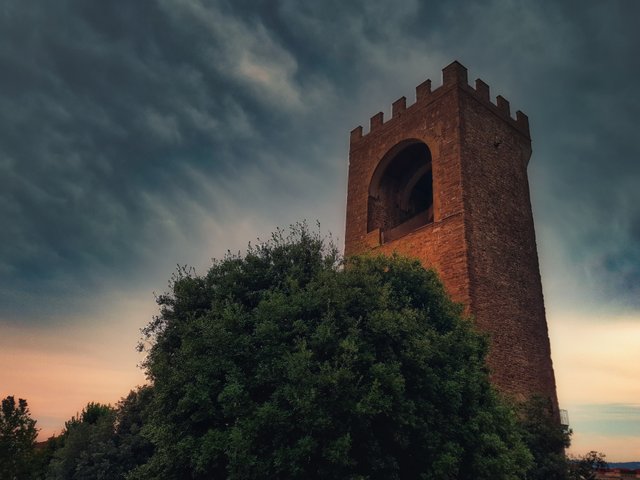📷Firenze
Savonarola and the Fall of Mediaeval Florence
Savonarola's martyrdom ends the story of mediaeval Florence. The last man of the Middle Ages—born out of his due time—had perished. A portion of the prophecy was fulfilled at once. The people of Italy and their rulers alike were trampled into the dust beneath the feet of the foreigners—the Frenchmen, the Switzers, the Spaniards, the Germans.
The new King of France, Louis XII, who claimed both the Duchy of Milan and the Kingdom of the Two Sicilies, entered Milan in 1499; and, after a brief restoration, Ludovico Sforza expiated his treasons by being sold by the Swiss to a lingering life-in-death in a French dungeon. The Spaniards followed; and in 1501 the troops of Ferdinand the Catholic occupied Naples.
Like the dragon and the lion in Leonardo's drawing, Spain and France now fell upon each other for the possession of the spoils of conquered Italy; the Emperor Maximilian and Pope Julius II joined in the fray; fresh hordes of Swiss poured into Lombardy.
The battle of Pavia in 1525 gave the final victory to Spain; and, in 1527, the judgment foretold by Savonarola fell upon Rome, when the Eternal City was devastated by the Spaniards and Germans, nominally the armies of the Emperor Charles V. The treaty of Cateau-Cambresis in 1559 finally forged the Austrian and Spanish fetters with which Italy was henceforth bound.
The Republic of Florence under Soderini
The death of Savonarola did not materially alter the affairs of the Republic. The Greater Council kept its hold upon the people and city, and in 1502 Piero di Tommaso Soderini was elected Gonfaloniere for life.
The new head of the State was a sincere Republican and a genuine whole-hearted patriot; a man of blameless life and noble character, but simple-minded almost to a fault, and of abilities hardly more than mediocre.
Niccolò Machiavelli, born in 1469, had entered political life in 1498, shortly after Savonarola's death, as Secretary to the Ten (the Dieci di Balia). He was much employed by Soderini both in war and peace, especially on foreign legations. Although he later sneered at Soderini for his simplicity, he cooperated faithfully and ably during his administration.
It was under Soderini that Machiavelli organized the Florentine militia. Pisa was finally reconquered for Florence in 1509; although Machiavelli cruelly told the Pisan envoys that the Florentines required only their obedience, the conquerors showed unusual magnanimity and generosity in their triumph.
The Flourishing of Florentine Art
These last years of the Republic were glorious in the history of Florentine art:
- 1498: Leonardo da Vinci completed The Last Supper for Ludovico Sforza.
- 1498: Michelangelo commenced his Pietà in Rome (now in St. Peter's).
- 1499: Baccio della Porta began a fresco of the Last Judgment in Santa Maria Nuova, later finished by Fra Bartolommeo.
While Soderini ruled, Leonardo and Michelangelo worked in Florence: Michelangelo's gigantic David—the Republic preparing to meet its foes—was finished in 1504. Leonardo painted the Mona Lisa, embodying Renaissance ideals. Raphael, visiting Florence, was deeply influenced by Leonardo and Fra Bartolommeo.
Purely Florentine painting in the Cinquecento culminated in Fra Bartolommeo (1475–1517) and Andrea del Sarto (1486–1531), both pupils of Piero di Cosimo. Bartolommeo became the most purely religious master, and Andrea del Sarto one of the greatest colourists of the time.
The Ominous Carnival of 1511
In the Carnival of 1511, a grim pageant, the Carro della Morte, was shown in Florence. Designed by Piero di Cosimo, it featured a black chariot drawn by buffaloes, painted with bones and white crosses. On top stood Death with a scythe, surrounded by closed coffins. Skeletons and mounted figures followed, chanting the Miserere.
The spectacle signified the return of the Medici to Florence, "as it were, a resurrection from death to life."
In 1512, Spanish troops reinstated the Medici in Florence after the sack of Prato. Piero Soderini went into exile, and the Greater Council was abolished. Disciples of Savonarola attempted to liberate Florence but were executed.
Machiavelli and the Medici
Machiavelli, having been imprisoned and tortured, was released and lived in poverty at his villa near San Casciano. There he wrote The Prince and Discourses on Livy. Florence was ruled by Pope Leo X’s nephew, the younger Lorenzo, who married a French princess and surrounded himself with courtiers.
Despite the Medici’s return, Florence experienced a short-lived resurgence of republicanism in 1527. However, the city eventually capitulated to combined Papal and Imperial forces in 1530.
Alessandro de’ Medici became hereditary ruler but soon revealed himself as a tyrant. He was assassinated in 1537 by Lorenzino de’ Medici. Florence then fell under Cosimo I, who united Medici craft with Sforza brutality and became the first Grand Duke of Tuscany.
Florence’s history reflects a dramatic interplay of art, politics, and power—from Savonarola’s martyrdom to Machiavelli’s writings, and from Michelangelo’s David to Cosimo I’s rule—marking the end of the Republic and the dawn of the Medici Grand Duchy.
| Category | #photography |
| Photo taken at | Florence - Italy |
)


Upvoted! Thank you for supporting witness @jswit.